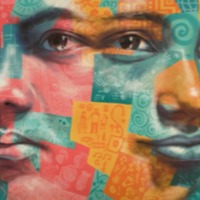
Seif
There is an estimated 48,000 people living in modern slavery in Libya (GSI 2018). Libya is a major transit destination for migrants and refugees hoping to reach Europe by sea. Human trafficking networks have prospered amid lawlessness, created by the warring militias that have been fighting for control of territories since the toppling of Muammar Gaddafi in 2011. Highly organized trafficking and migrants smuggling networks that reach into Libya from Niger, Nigeria, Chad, Eritrea, Ethiopia, Somalia, Sudan, and other sub-Saharan states subject migrants to forced labor and forced prostitution through fraudulent recruitment, confiscation of identity and travel documents, withholding or non-payment of wages, debt bondage, and verbal, physical, and sexual abuse. In some cases, migrants reportedly pay smuggling fees to reach Tripoli, but once they cross the Libyan border they are sometimes abandoned in southern cities or the desert where they are susceptible to severe forms of abuse and human trafficking. Seif was a student in Sudan when he and some friends decided to travel to Europe. They arranged the journey with a smuggler and left for Libya through Chad. The desert was a tough experience, there was little to eat and drink, and when they arrived in Libya, they were exhausted. There, they were kidnapped and forced to work without pay in the goldmines close to the border.

Gold Costs More Than Money
This lesson examines the use of forced labour i.e. slavery, in gold mining. It includes a gentle but confronting narrative, a surreal short film by young filmmakers and an audio recording of an engaged couple’s argument. The teaching material also addresses how we, as consumers of products that include gold, such as smart electronics and gold jewellery, can use our buying power to send a message to manufacturers in order to effect change.There are two 55-minute lessons, depending on the level of your students, it is aimed at older teens, young adults and adults, B1+ (upper intermediate to advanced)Materials include The young man on the train (narrative), student worksheet, autonomous learning resources, audio recording, transcript, information about human trafficking and modern slavery, slides, real-life interview with a businessowner, Teacher’s Guide. Audio for this lesson plan can be found at https://youtu.be/Dv53eoT94JA